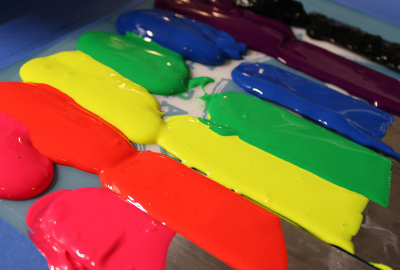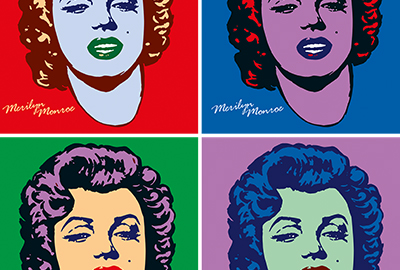Keep from chosing the wrong method or not knowing valuable info when needing to print tshirts. Knowing what screen printing is and how it can be applied will help you choose the correct printing method for your projects.
atlantagraphicsandprinting.com gathered the following information, advantages, and disadvantages of screen printing.
What is Screen Printing?
Screen printing, also referred to as silkscreen printing, is the process of transferring a stenciled design onto a flat substrate using a mesh screen, ink, and a squeegee. Clothing garments and paper are the most commonly screen-printed surfaces. However, with specialized inks, screen printing can be applied to wood, metal, plastic, and glass.
A Brief History of Screen Printing
Screen printing originated in China (around AD 221). The process was a mode of transferring designs onto fabrics. Following this, the Japanese began using simple stenciling techniques as a way to create imagery. At this time, stencils were cut out of paper, and the mesh was woven from human hair.
Samuel Simon patented the screen printed form most familiar in the Western world in 1907. In 1910, along with photography, screen printers began experimenting with photo-reactive chemical processes.
Currently, credit is given to the artist Andy Warhol for making screen printing popular as an artistic technique. Warhol’s many silkscreens include his 1962 Marilyn Diptych (one of his most recognizable pieces), which is a simple portrait of the actress Marilyn Monroe screen printed in bold colors.
How Screen Printing Works
Screen printing involves creating a stencil on a mesh screen with voided spaces that allow ink to pass through it and then pushing it through (with a squeegee) to create and imprint the design on the intended surface below. The most common surface used in screen printing is paper and fabric, but metal, wood, glass, and plastic can also be used.
Screen Printing Advantages
This printing process has produced high-quality results for millennia. Some of the more striking advantages include:
- Cheap for large quantity printing
- Increased cost-effectiveness when fewer ink colors are required
- Designs can consist of highly detailed text and fine lines
- Silkscreen printing is highly versatile and can be used to print on a multitude of different materials like cotton, polyester, metal, wood, plastic, glass, etc.
- This process produces higher quality output than digital prints
- Screen printing produces more durable images that are needed over the long-term
Note: While this printing process can produce spectacular and long-lasting results. Financially speaking, it is not the best choice for small print runs or jobs requiring multi-color impressions.
Screen Printing Disadvantages

Even though screen printing has some impressive advantages, some off-putting disadvantages may lead you to seek an alternative printing method. Some of these disadvantages include:
- Smaller quantity jobs/runs may not compensate for the expensive setup costs
- This printing process is not cost-effective when the design has 3 colors or more
- Screen printing only becomes cost-effective if the design graphics are identical for each piece
- Silkscreen can be challenging to execute as it requires specialized knowledge and materials
- Improper or unstable alignment can produce blurred images
Note: The screen printing process requires a substantial amount of water to mix the inks and clean the screens, making it one of the least eco-friendly printing methods.
Screen Printing Applications
Screen printing is a highly effective technique for creating bold and detailed canvases, posters, and artwork. This printing method can also be used to print fabrics and textiles, so it’s excellent for creating a variety of custom clothing and products, including:
- T-shirts
- Sweatshirts
- Backpacks
- Cups
- Containers
- Aprons
- Flags
- Binders
- Ceramics
- Glass
Basically, if an object has a printable surface, screen printing can be applied in some way. Whether the method’s benefits outweigh its disadvantages is a judgment call you will have to make.
Screen Printing Popularity
Many artists have dabbled in screen printing, but there are some that have produced master artwork from this printing method. Some of the more notable artists include:

- Andy Warhol
- Edward Ruscha
- Shahzia Sikander
- Louise Bourgeois
- Jackson Pollock
- Roy Lichtenstein
- Bridget Riley
- Gerhard Richter
Some of the most treasured screen-printed artwork can be found in some of the most prestigious art galleries and museums worldwide.
Screen Printing
In this article, you discovered what screen printing is, its advantages, its disadvantages, and its applications to help you make an informed decision when selecting a printing method.
Because of screen printing’s versatility and high quality, this method should always be considered when any printing is required in your project.
Your failure to understand and consider screen printing for your project may leave your project inferior or more expensive.
Sources:
blogs.swarthmore.edu/its/2021/01/19/how-you-can-do-screen-printing-from-home/
csuchico.edu/turner/_assets/documents/history-of-screen-printing.pdf
scholarworks.lib.csusb.edu/cgi/viewcontent.cgi?article=1032&context=cap-curr
moma.org/collection/terms/screenprint

